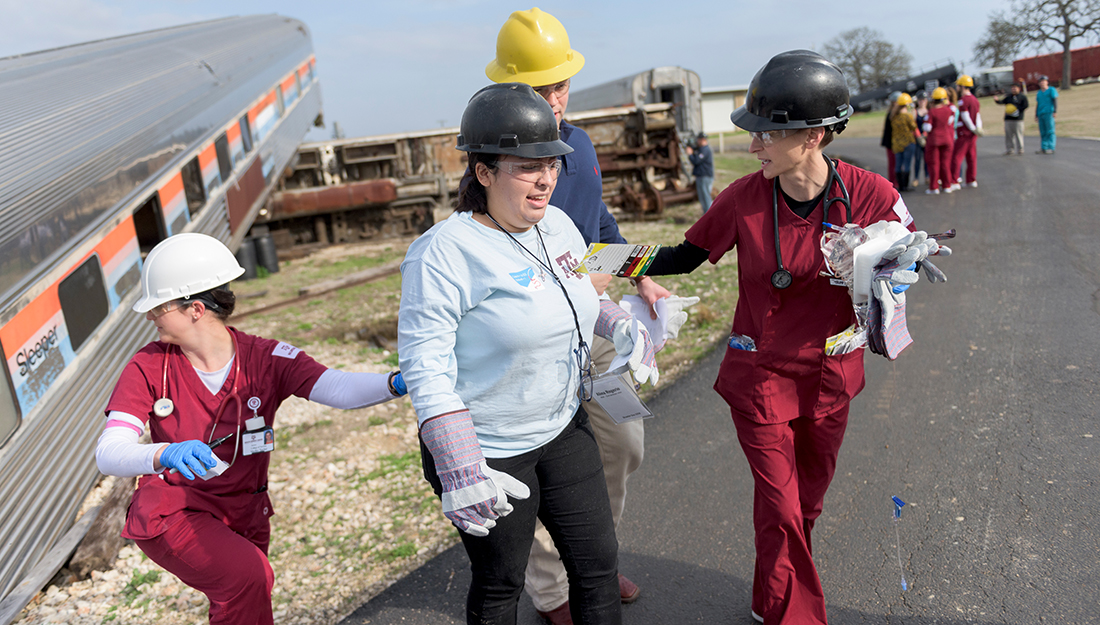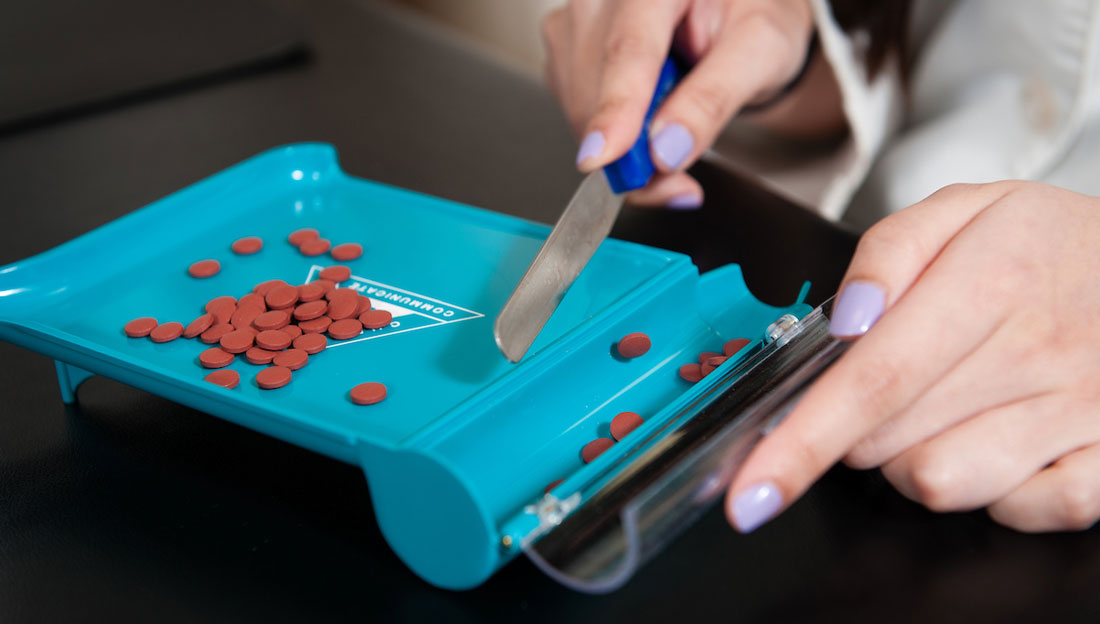- Dominic Hernandez
- Community, Medicine, Nursing, Public Health, Show on VR homepage
Ten years of disaster training
Texas A&M conducts nation's largest student-led, interprofessional emergency response exercise

iTexas A&M University Health Science Center
In 2005, Hurricane Rita made landfall in Texas and forced millions of coastal Texans to evacuate to cities like Austin, San Antonio, Dallas and College Station. For six days, the Large Animal Teaching Hospital on the Texas A&M University campus was transformed into the largest human hospital in the state, housing more than 650 Houston and Galveston area patients, their families and caregivers. Hundreds of faculty, staff, students and community members volunteered to assist in daily care of these patients.
After seeing the aftermath of Hurricane Rita (and Hurricane Katrina one month beforehand), students at the Texas A&M College of Nursing began to realize that they could do more to prepare for the unexpected.
In 2008, a group of 35 students from the College of Nursing put together their own daylong mock disaster, aptly named “Disaster Day,” to prepare for unforeseen events that require quick and efficient health care without access to the sufficient medical facilities or supplies. For 10 years, the simulations have grown larger, the teams are now interprofessional, and the disasters have gotten more complex with secondary incidents and complications.
Today, Disaster Day is the largest student-led, interprofessional emergency response simulation in the United States. With 650 participants, this year’s Disaster Day was led by students and faculty from the Texas A&M College of Medicine, College of Nursing, School of Public Health, Rangel College of Pharmacy and College of Veterinary Medicine & Biomedical Sciences.
[youtube https://www.youtube.com/watch?v=ss1i5Hvyyis&w=560&h=315]
“Disaster Day gives students an opportunity to engage in a large-scale scenario in a non-traditional setting where resources are scarce,” said Martin Mufich, MSN, RN, clinical instructor at the College of Nursing and steering committee member of Disaster Day. “It helps all participants, from students to health professionals, to think about how we can improve patient outcomes, even when we and our systems are overwhelmed.”
Coordinating Disaster Day is a huge undertaking. A 70-person student committee works for months to ensure the event goes on without a hitch. With help from the Texas A&M Health Science Center’s team of specially trained interprofessional faculty and staff, student committees laid most of the ground work for the annual event, coordinating fundraising, supplies, case studies, volunteers, moulage, external operations, public relations and administration.
This year’s Disaster Day moved from a large local church to Texas A&M Engineering Extension Service’s Brayton Fire Training Field and Disaster City, a world class, 52-acre training facility with an extraction site, field hospital and Emergency Operations Training Center (EOTC).
Students learned about working together on interprofessional teams with one goal—saving as many lives as possible in the aftermath of a simulated train derailment. Students also learned the behind-the-scenes work of managing a disaster with experience in the EOTC and had an opportunity to fine-tune their profession’s own technical skills.
“Interprofessional education occurs when students from two or more professions learn with, from and about each other to improve collaboration and the quality of care,” said Christine Kaunas, MPH, executive director of interprofessional education and research. “When students in nursing work alongside those in medicine, public health and pharmacy, they directly see the value that each discipline is bringing to the table. We see that team-based, emergency management training provides for better and safer health outcomes.”
Students participated in half-day simulations, where they acted as patients, health care providers, observers and evaluators in emergency operations. Each team is made up of students from various disciplines, with faculty and student observers to evaluate the team’s interprofessional competencies. A debriefing was held after the simulation to discuss what changes could have been made and how to improve in future scenarios, or in a real-life disaster.
“Disaster Day is a hallmark of interprofessional education, where students from various fields combine their expertise for effective management of an emergency situation,” said Carrie L. Byington, MD, dean of the Texas A&M College of Medicine, senior vice president of the Texas A&M University Health Science Center and vice chancellor for health services at The Texas A&M University System. “We are proud to partner with TEEX to provide an exceptional opportunity for our students to learn together at a world-class facility where emergency responders from across the globe come to train. We have seen firsthand the value of Disaster Day during the state’s recent response to Hurricane Harvey, where many of our students were called upon as first responders.”
Creating an event of this magnitude necessitates a great amount of support. Generous sponsors for the one-day mock disaster included: the Colleges of Nursing, Medicine, Pharmacy, and Public Health, the Association of Former Students and HEB.
Media contact: media@tamu.edu


